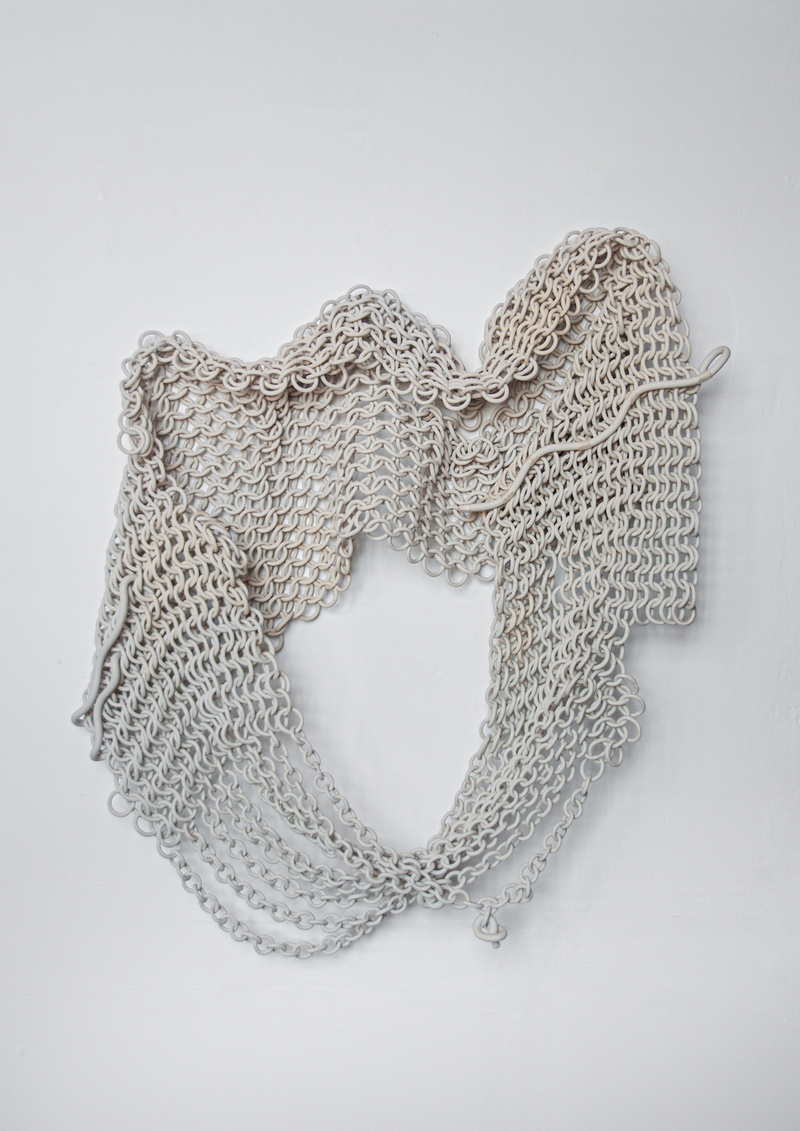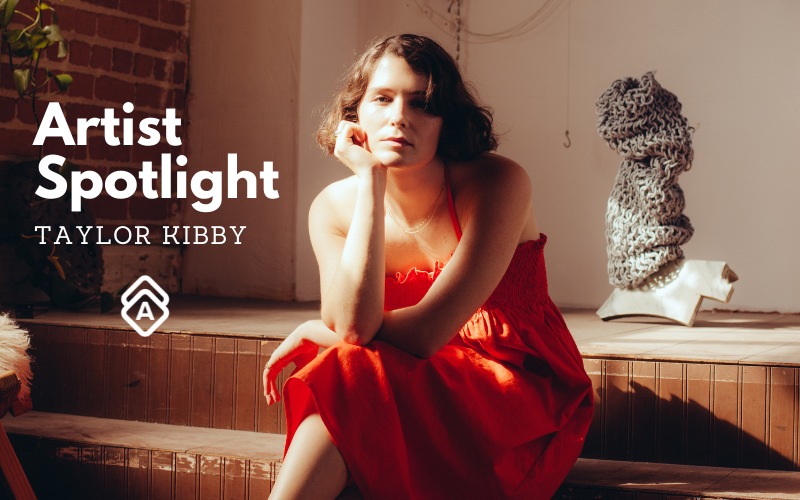Taylor Kibby tells a story.
A story of memory, connection, and energy. Her work reflects these narratives of shifting energy through the movement of her semi-rigid materials.
Artwork Archive Discovery Artist Taylor Kibby is a sculptor and ceramicist living and working in Los Angeles, California. In addition to telling a story, her work balances dualities like rigid/flexible and hard/soft, to make space between for an unknown.
“The piece is a being in its own right–with each move I make, the piece reacts and sways to its own internal logic. That is part of the pleasure of the work; we move together in conversation back and forth in search of balance and resolution," says Kibby.
Kibby is known for her intricate, flowing stoneware sculptures, which are moulded in interlocking links of a remarkable lightness and delicacy, making them resemble woven chains. Her interest in chain links and other permeable barriers is rooted in their potential to reflect the way, "objects and people occupy space in the world as well as notions of memory, identity and narrative."
We got the chance to ask Taylor Kibby a few questions about her art practice and about her art business. Read on below for that interview.
You can also see more of her work on Discovery.
 Taylor Kibby. Tangle 1, Stoneware, Mason Stain, Embroidery Thread, 18 x 14 x 14 in
Taylor Kibby. Tangle 1, Stoneware, Mason Stain, Embroidery Thread, 18 x 14 x 14 in
Has your work changed over time—do you find yourself understanding your art career through different periods of expression?
TK: I’ve definitely felt the growth of my work, especially in the last few years.
Grad school was a super compressed and accelerated period of change and growth, but even in the few years since I’ve noticed the shifts in how and why I make. Not just expansive growth, but I also feel like making work has me digging deeper into myself.
I don’t think I have enough distance to say I have any understanding or perspective yet, but I can feel the reverberations of the changes.
Do you have a favorite or most satisfying part of your process?
TK: The most satisfying part is the daydreaming; before anything can intrude to change the vision in my head.
How do you experiment within your art practice? When you start a work do you have an idea of how you would like it to look?
TK: I try to keep experimentation alive in my practice by always introducing new materials and mediums and ways of making.
I like to translate one idea from one material to the next to see what gets lost or found within the reconfiguration. I do usually have an image in my head but it rarely ever turns out that way.
A large part of what keeps me interested in making work is using materials that have their own internal logic and way of doing things. They are hard to predict, which is a joy.
What routines—art-making and administrative—are essential to success in your art career?
TK: The administrative work that is essential is the good documentation of work.
Without good photos and accurately recorded information I couldn’t apply to residencies, grants, or present the work to collectors with confidence.
Artistically, I think the routine of taking time for yourself is the most essential. Refilling the well when it’s been drained is a lesson I continually relearn.
 Taylor Kibby, Prisoner of an eternal present, Stoneware, Porcelain, Embroidery Thread, 32 x 27 x 6 in
Taylor Kibby, Prisoner of an eternal present, Stoneware, Porcelain, Embroidery Thread, 32 x 27 x 6 in
Why did you decide to inventory and archive your artworks?
TK: It was really for my own sanity. The amount of information that each piece has attached to it is astonishing and keeping a good archive preserves space in my mind for the actual imagining and making of art.
What advice would you give an emerging artist during this time?
TK: Don’t make decisions from a place of fear.
How does Artwork Archive help manage your career?
TK: I love Artwork Archive. It's an amazing resource where I can keep all of the information that I could ever need about my practice and my business.
It's an amazing place to go to keep information about work: where it's going, who has collected pieces, what galleries have work. Especially when I'm doing applications or sending out portfolios, having all of that in one place is extremely helpful and it makes me feel and look extremely professional. It's a real sense of pride that I can put together a portfolio to send to potential collectors or galleries and they are able to see the work in its best light.






